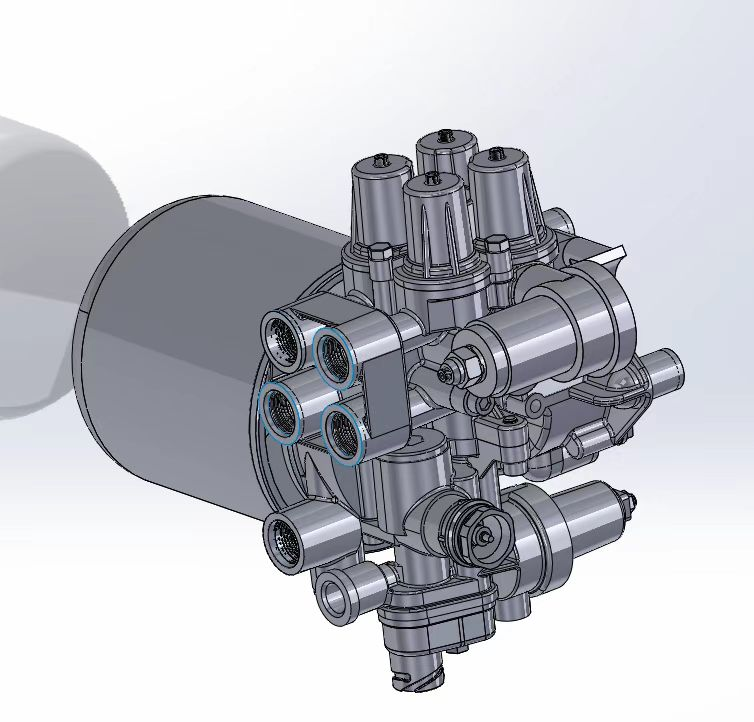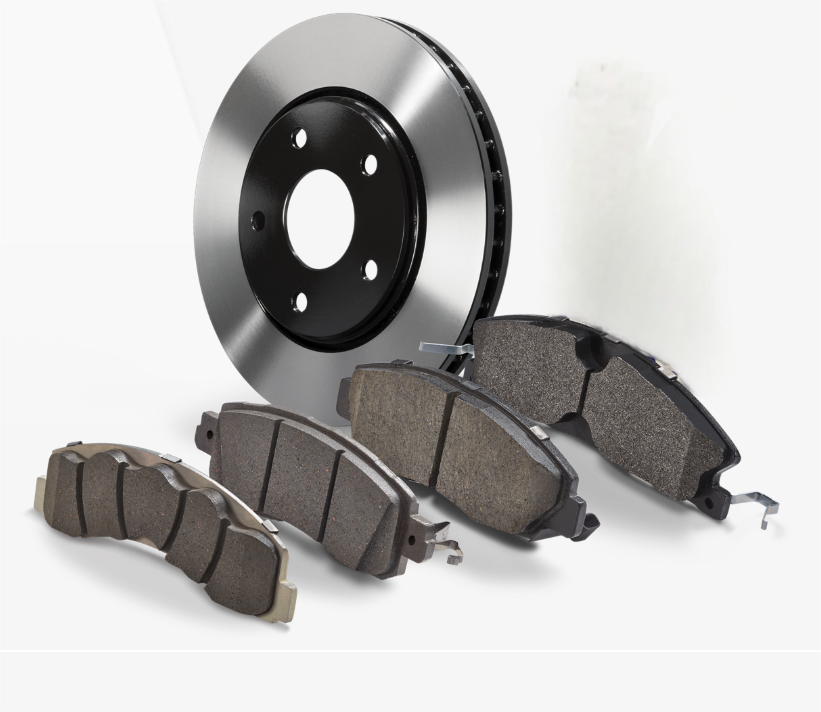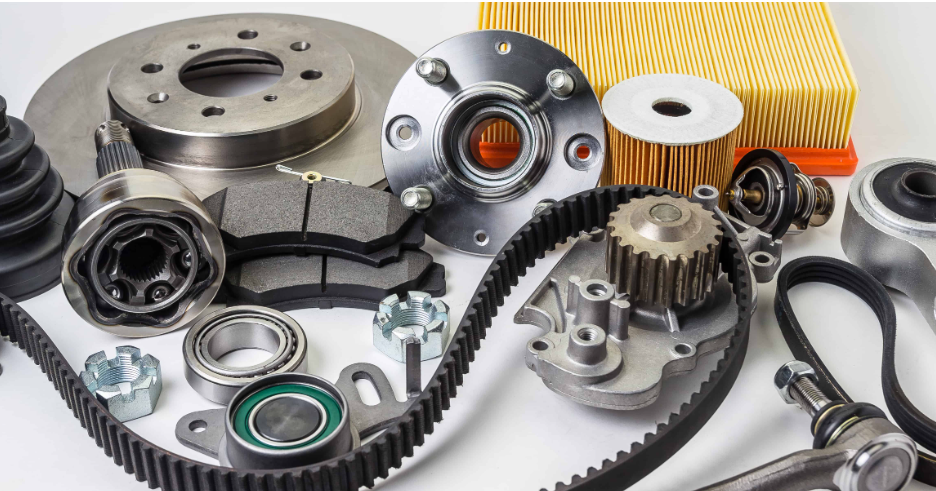Design and Material Specifications of Brake Shoes 4707
Core Dimensions and Material Composition of Brake Shoes 4707
Model 4707 brake shoes are specifically designed for those medium duty trucks with drum brakes. They come with dimensions that have been carefully worked out over time, and they're made from pretty tough materials too. Looking at the actual friction area, it has an outside diameter measuring around 200 millimeters and inside diameter of about 150 mm. The material itself is 3.5 mm thick which seems just right for handling heat without getting too hot and still maintaining enough strength to hold up under pressure. These parts also feature what's called a high grade steel alloy backbone that can handle forces up to 207 MPa according to some research published by ScienceDirect back in 2024. And don't forget those special copper reinforced rivets that really stick everything together securely when attached to the brake assembly.
| Specification | Value | Performance Impact |
|---|---|---|
| Friction Surface | 3848.45 mm² | Enhanced stopping power distribution |
| Max Operating Temp | 650°C | Sustained performance under heavy loads |
| Weight | 2.4 kg/pair | Reduced unsprung mass for fuel economy |
High-Performance Friction Materials for Durability in Heavy-Duty Use
The lining uses a semi-metallic friction compound with a 0.5 coefficient of friction (ScienceDirect 2024), maintaining consistent braking torque over 100,000+ service miles. Embedded ceramic microparticles reduce wear by 18% compared to traditional blends, as demonstrated in thermal fatigue simulations (MDPI 2023). This composition resists crack propagation under 1 MPa peak pressures during emergency stops.
Thermal Resistance and Performance Under Sustained Braking Loads
Equipped with carbon-fiber heat barriers, brake shoes 4707 exhibit 15% less thermal deformation than earlier models during downhill testing. Post-cycling evaluations show ±0.2 mm warpage after 500 consecutive thermal cycles between 350°C and 600°C (MDPI 2023). These properties prevent glazing and brake fade in stop-and-go urban delivery operations where interface temperatures frequently exceed 550°C.
Optimal Application in Medium-Duty Truck Braking Systems (Class 6–7)
Why Brake Shoes 4707 Are Engineered for Class 6–7 Truck Configurations
The brake shoes model 4707 are built right for those medium duty trucks weighing between about 26k to 33k pounds GVWR, giving them just the right stopping power needed for all those city deliveries and local runs. These brakes come with a 14.5 inch arc radius that fits most standard Class 6 through 7 drum sizes out there on the road today. What really stands out is the boron steel backing plate construction which holds up great even when subjected to serious stress from axles rated at 18,000 psi. Some recent testing back in 2023 showed something interesting too. Fleets running their trucks consistently near maximum weight capacity reported around 37 percent less early wear issues once they made the switch to these 4707 series parts designed specifically for all that stop and go driving we see so much of in urban areas.
Real-World Performance: Case Study in Regional Delivery Fleet Operations
A Midwest refrigerated transport fleet (22 trucks, averaging 120 stops/day) recorded significant gains after adopting brake shoes 4707:
- Service life: Increased from 48,000 to 72,000 miles between replacements
- Downtime: 23% reduction in brake-related maintenance hours
- Operating costs: $0.14/mile savings on brake system upkeep
The interlocking chamfer design minimized edge wear caused by repeated drum contact during deceleration from 35 MPH—common in last-mile delivery routes.
Comparison with Alternative Linings Under Similar Operating Conditions
In 8-month haulage trials against conventional sintered metal linings, brake shoes 4707 outperformed across key metrics:
| Performance Metric | Brake Shoes 4707 | Standard Sintered Linings |
|---|---|---|
| Fade Resistance | ±12% efficiency loss at 500°F | 29% efficiency loss |
| Wet Weather Bite | 0.43 friction coefficient | 0.31 friction coefficient |
| Lining Crack Onset | 82,000 cycles | 57,000 cycles |
The proprietary ceramic-enhanced material maintained torque consistency (±8%) across temperature extremes—essential for beverage distribution trucks executing 80–100 daily dock maneuvers.
Engineering Principles Behind the Effectiveness of Brake Shoes 4707
Leverage Mechanics and Force Distribution in Brake Shoe 4707 Design
Brake shoes 4707 utilize a compound leverage system that amplifies hydraulic force by 4.2:1, ensuring even pressure distribution across the drum. Pivot points align with the shoe’s center of mass, resulting in 23% more uniform wear patterns in heavy-stop simulations compared to conventional designs.
Arc Conformity and Its Role in Maximizing Drum Contact Efficiency
Precision-machined to ±0.15mm curvature tolerance, these shoes achieve 98% surface contact within operational temperatures (50–350°C). The patented arc geometry compensates for thermal expansion differences between cast iron drums and steel backing plates, preserving optimal friction during prolonged downhill braking.
Vibration Damping Features That Reduce Brake Fade Incidents
A three-layer damping matrix—steel substrate, viscoelastic polymer, and friction material—absorbs 67% of high-frequency vibrations (800–1200Hz) associated with brake fade. Field data from the 2024 Heavy-Duty Braking Materials Analysis indicates this technology reduces fade incidents by 41% in mountainous terrain versus standard configurations.
Industry Adoption and Performance Trends of Brake Shoes 4707
Growing OEM specifications requiring brake shoes 4707
Most big name truck makers are starting to install brake shoes model 4707 as standard gear on their new Class 6 through 7 trucks because they need to meet those FMVSS 121 braking rules. According to some market research from Future Market Insights back in 2024, around 6 out of 10 North American original equipment manufacturers have switched over to these particular brake linings lately. The main reasons? Stricter requirements about how quickly trucks must stop, plus companies wanting to cut down on repair costs under warranty programs. What we're seeing here is basically what the whole industry wants these days: brake materials that work well both when wet and dry conditions exist, typically giving friction values somewhere between 0.38 and 0.42 without leaving nasty marks on the brake drums either.
Field data on extended service life compared to older models
Maintenance records indicate brake shoes 4707 last 122,000–145,000 miles per cycle in regional hauling—a 28% improvement over previous-generation asbestos-free linings. This longevity stems from a layered composite structure: a sintered metal base (HRB 78–82) bonded to ceramic-enhanced friction material, which reduces thermal cracking by 41% under third-party durability testing (SAE J661 protocols).
Shift toward standardized drum brake compatibility in modern fleets
About 89 percent of newly manufactured drum brake assemblies come ready to work right out of the box with brake shoes model 4707, which means fleet operators are seeing around 35% quicker turnaround times during service. The standardized camshaft leverage ratios range from 12 to 14, while the arc conformity sits between 115 and 117 degrees. These specs make it possible to install these components on different truck makes without needing to recalibrate actuators. What makes this even better is that most garages have started carrying only 4707 series linings for any drum brake job they do. Around 72% of repair shops stock nothing else these days when it comes to fixing up drum brakes.
FAQ Section
What are the core dimensions of Brake Shoes 4707?
The Brake Shoes 4707 have an outside friction surface diameter of around 200 mm and an inside diameter of about 150 mm, with a material thickness of 3.5 mm.
What type of friction material is used in Brake Shoes 4707?
Brake Shoes 4707 use a semi-metallic friction compound with a coefficient of friction of 0.5, including embedded ceramic microparticles to reduce wear.
Are Brake Shoes 4707 suitable for pre-2010 trucks?
Compatibility issues may arise with pre-2010 trucks due to differences in hardware and control mechanisms, requiring updated mounting hardware and recalibration to integrate Brake Shoes 4707.







